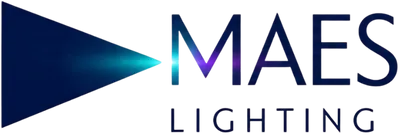
Fluorescent vs. LED Explosion-Proof Lighting: Cost Analysis | Maes Lighting
Explosion-proof lighting is critical for hazardous environments, and while fluorescent options were once considered economical, LED technology has redefined cost-effectiveness. At Maes Lighting, our explosion-proof lighting and hazardous area lighting solutions prioritize safety, efficiency, and long-term savings. This article compares fluorescent and LED explosion-proof lighting in 2025, highlighting why LEDs are now the smarter investment for industrial facilities.
Understanding Fluorescent Explosion-Proof Lighting
Fluorescent explosion-proof lights use gas-filled tubes to produce light, designed to prevent ignition in hazardous areas like oil refineries or chemical plants. They comply with NFPA 70 standards and are suitable for Class I Division 1 or Class II Division 2 environments. Historically, their lower upfront cost made them appealing.
However, fluorescent lights have drawbacks, including shorter lifespans (10,000–20,000 hours) and higher energy consumption compared to modern alternatives [Source: Energy.gov].
Features of Fluorescent Lighting
Certified Safety: Meets UL and ATEX standards.
Lower Initial Cost: Cheaper upfront than LEDs.
Limited Lifespan: Requires frequent replacements.
Why LEDs Outshine Fluorescent Lights
LED explosion-proof lighting, such as Maes Lighting’s Class 1 Division 1 lighting, offers superior performance. LEDs consume up to 60% less energy, reducing utility costs, and last up to 100,000 hours, minimizing maintenance in hazardous areas [Source: Energy.gov]. Their robust design, including vapor-tight LEDs, ensures durability in harsh conditions.
Unlike fluorescents, LEDs provide instant-on lighting and better color rendering, improving visibility and safety in compliance with OSHA’s hazardous location standards.
LED Advantages
Energy Efficiency: Lower power consumption.
Longer Lifespan: Reduces maintenance costs.
Enhanced Safety: Instant illumination and no mercury.
Cost Savings with LED Explosion-Proof Lighting
While fluorescent lights have a lower initial cost, LEDs deliver greater long-term savings. Their energy efficiency and extended lifespan reduce electricity and replacement expenses. For example, a 100W LED can replace a 250W fluorescent, cutting energy costs significantly [Source: Energy.gov]. Smart features like dimming in industrial LED lighting further optimize savings.
LEDs also qualify for Energy Star certifications and utility rebates, offsetting upfront costs and supporting EPA sustainability goals.
Cost-Saving Benefits of LEDs
Lower Utility Bills: High efficiency reduces energy use.
Reduced Maintenance: Fewer replacements in hazardous areas.
Incentives: Rebates and tax benefits accelerate ROI.
Durability in Hazardous Environments
Fluorescent explosion-proof lights are prone to flickering and degradation in extreme conditions, requiring frequent upkeep. In contrast, LED explosion-proof lights are built with rugged materials like aluminum or stainless steel, earning IP66/IP67 ratings for water and dust resistance [Source: Energy.gov]. This makes them ideal for wet or corrosive environments, such as offshore rigs or food processing plants requiring NSF-rated lighting for FDA compliance.
LEDs also withstand temperature extremes and vibrations, ensuring reliability in demanding settings.
Durability Highlights of LEDs
Weather Resistance: Performs in rain, dust, or humidity.
Corrosion Protection: Resists chemicals and saltwater.
Impact Resistance: Built for high-traffic industrial areas.
Safety and Compliance Advantages
Fluorescent lights contain mercury, posing environmental and disposal risks, while LEDs are mercury-free and eco-friendly. LEDs also provide consistent, high-quality light, reducing accidents in hazardous areas [Source: OSHA]. For food processing or pharmaceutical facilities, combining explosion-proof lighting with NSF-rated features ensures compliance with strict sanitary standards.
Maes Lighting’s LEDs are certified for hazardous locations, meeting UL, ATEX, and IECEx requirements for maximum safety.
Safety Benefits of LEDs
Mercury-Free: Safer for workers and the environment.
Improved Visibility: Reduces workplace accidents.
Regulatory Compliance: Meets OSHA and FDA standards.
Conclusion
While fluorescent explosion-proof lighting was once seen as economical, LED explosion-proof lights offer superior safety, durability, and cost savings. Maes Lighting’s explosion-proof lighting and hazardous area lighting solutions deliver unmatched performance for hazardous environments. Explore our full LED lighting portfolio to upgrade your facility in 2025.



